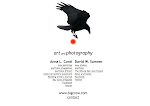Man’s relentless efforts to
master the environment. That’s the underlying message I took away from my visit
to SFMOMA to see the current exhibition of photography by Naoya Hatakeyama. But
there is a twist.
The first images in the
exhibition are of expansive landscapes featuring dramatic mountains. The
mountains, other than being pretty held no obvious message, they are just
“pretty.”
The images I found more
appealing were of abandoned and working quarries and were photographed as grand
landscapes and had a definite message. From an anthropological point of view
they tell a dramatic story of the consequences of the archaic notion, so
persistently maintained by human kind, that nature can and should be conquered.
Hatakeyama’s work so clearly shows us that the fact that the earth will never
bend to the human will is lost yet on another generation.
Hatakeyama demonstrates how this quest of humanity to dominate the very environment that gives it life, is carried out by every means that is violent. The irony is dramatically evident in his imagery of the aftermath of the 2011 earthquake and tsunami that devastated Japan. These images share a gallery with a sequence of photographs of quarry blasting, images that capture the brutally violent reality and consequence of the explosions. But still, what these images tell us is that despite every effort by “man,” nothing will ever match the violence of which nature is capable. Nature is the master and there is no such thing as conquering the environment.
Photos: © Naoya Hatakeyama




